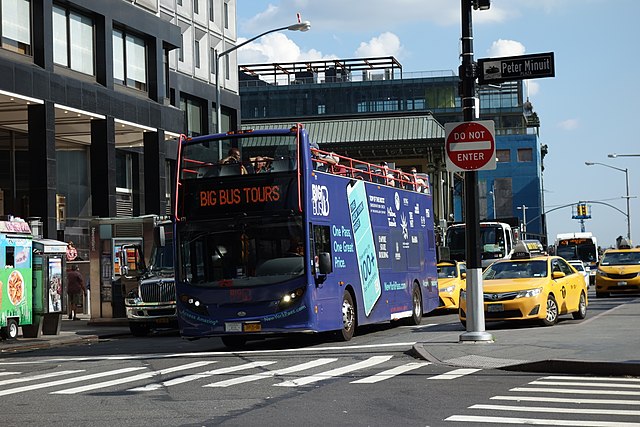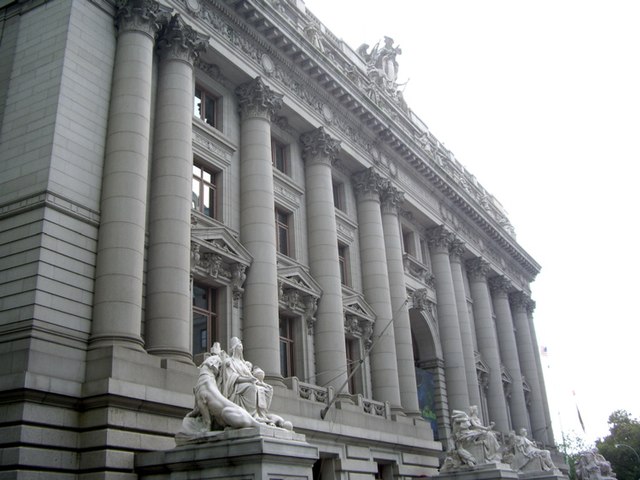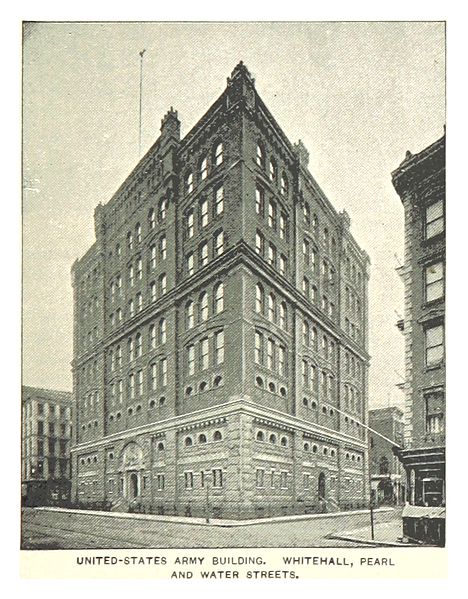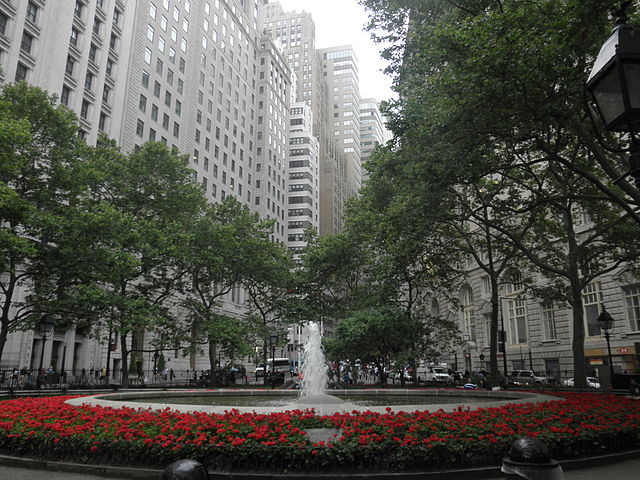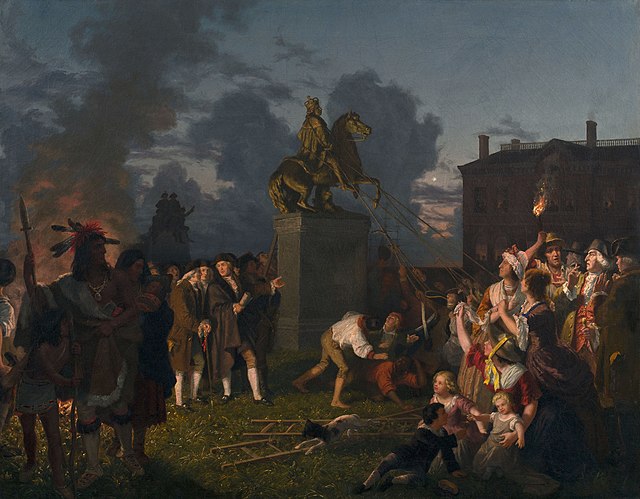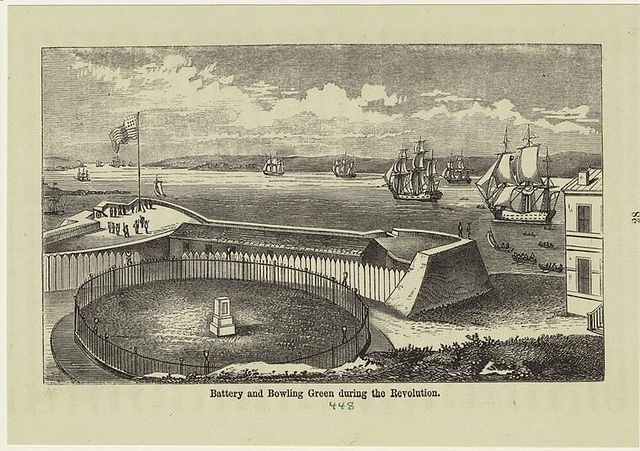Whitehall Street is a street in the South Ferry/Financial District neighborhood of Lower Manhattan in New York City, near the southern tip of Manhattan Island. The street begins at Bowling Green to the north, where it is a continuation of the southern end of Broadway. Whitehall Street stretches four blocks to the southern end of FDR Drive, adjacent to the Staten Island Ferry's Whitehall Terminal, on landfill beyond the site of Peter Stuyvesant's 17th-century house.
A bus on Whitehall Street at the intersection with State Street
On the 1660 Castello Plan, Whitehall Street runs roughly diagonally from bottom left to top right, below the star fort at center left.
Alexander Hamilton U. S. Custom House seen from across Whitehall Street
Army Building
Bowling Green (New York City)
Bowling Green is a small, historic, public park in the Financial District of Lower Manhattan, New York City, at the southern end and address origin of Broadway. Located in the 17th century next to the site of the original Dutch fort of New Amsterdam, it served as a public gathering place and under the English was designated as a park in 1733. It is the oldest public park in New York City and is surrounded by its original 18th-century cast iron fence. The park included an actual bowling green and a monumental equestrian statue of King George III prior to the American Revolutionary War. Pulled down during the revolution, the 4000-pound statute is said to have been melted for ammunition to fight the British.
Bowling Green looking north from the fountain
Pulling Down the Statue of King George III, N.Y.C., (c. 1859) A romanticized Victorian era painting with historical inaccuracies: the sculpture is depicted in 1850s garb, and Native Americans, women and children are at the scene.
George Washington at Verplanks Point by John Trumbull 1790; the remains of the George III statue pedestal can be seen at the bottom between the horse's legs.
An 1859 engraving showing the remains of the George III statue pedestal in Bowling Green Park

